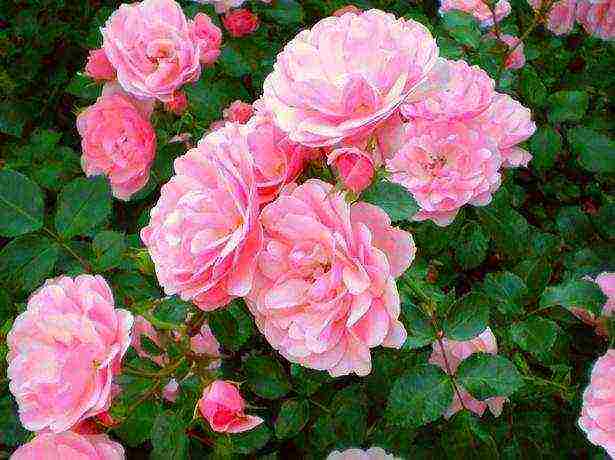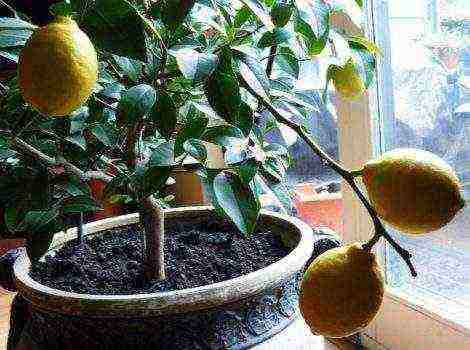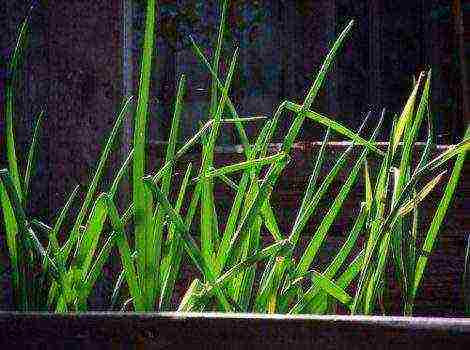Content

In almost every garden you can see magnificent roses of a wide variety of shades, and this is not surprising, because it is not for nothing that the rose is considered the real queen of the flower garden. Another thing is strange - why did not growing roses at home become as widespread? Just imagine how pleasant it is to admire the lovely bloom of these exquisite flowers all year round and breathe in their delicate fragrance!
What types of roses are suitable for growing at home?
Perhaps the whole point is that the rose is a very demanding and difficult houseplant to grow. Even with her garden relatives, not every florist can cope, let alone potted plants forced to grow in stuffy and cramped city apartments. If you do not make an effort and do not provide suitable conditions for indoor roses to grow, they are unlikely to be able to achieve sustainable flowering indoors from them. Therefore, be prepared for the fact that the home rose will have to pay more attention than the rest of the indoor plants.

If you do not make an effort and do not provide suitable growing conditions for indoor roses, they will hardly be able to achieve sustainable flowering indoors from them.
Of the whole variety of roses for home growing, only some varieties that are compact in size are suitable.
Video about growing indoor roses
Here are the main groups of roses that are most often found in apartments or offices:
Miniature roses
The height of the bushes reaches 30 cm, the smallest specimens do not exceed 10 cm.The plants are covered with small dark green matte leaves. Small double flowers are gathered in inflorescences and may be fragrant or odorless. The colors are very diverse. Flowering usually occurs in spring and summer.
Tea roses
In the garden, high varieties of tea roses are usually grown, while for home cultivation, varieties up to 50 cm high are used. Tea roses bloom profusely, for quite a long time, flowers of different shades have a pleasant aroma.

Tea roses bloom profusely for quite some time
Bengal roses
Unlike many other varieties of roses, Bengal roses do not require a rest period, they are able to bloom magnificently almost all year round. Bengal rose varieties are great for growing at home, as they are unpretentious and compact enough (no higher than 50 cm). The leaves of strongly branching bushes are small, the flowers are small, double, with a rich aroma. The color is pink, red or white.
Polyanthus roses
A variety of highly branching roses with extremely abundant flowering - bushes up to half a meter high are strewn with double or semi-double flowers, collected in inflorescences. There are cream, carmine, pink shades of flowers.

Polyanthus roses - a variety of highly branching roses with extremely abundant flowering
Secrets of caring for indoor roses
If when growing garden roses, the main care is reduced to the destruction of pests, watering and pruning plants for the winter, then roses in pots require much more attention.So that indoor roses do not acquire a deplorable look soon after purchase, it is necessary to provide them with suitable conditions and proper care:

Do not forget to water the roses abundantly, they like it when the soil is constantly wet
- roses need sunlight - a window facing west or east would be the best option;
- these capricious flowers do not tolerate dry air, so be sure to monitor the humidity in the room, especially in winter, during the heating season;
- the recommended room temperature is about +25 degrees, overheating can be detrimental to the plant;
- ventilate the room regularly to provide the roses with fresh air and protect them from overheating;
- the soil in pots must be breathable, nutritious and loose;
- be sure to provide a drainage layer at the bottom of the pots;
- do not forget to water the roses abundantly, they like it when the soil is constantly moist;
- remove wilted flowers immediately to prolong flowering;
- Do not fill the entire window sill with indoor plants - roses need space, and crowding of plants contributes to the spread of diseases and pests.
Video about caring for a home rose
Watering indoor roses deserves special attention: the soil should not be allowed to dry out, but the water should not stand in the pan either, it must be drained one hour after watering. If the roses grow in small pots, it is better to saturate them with water. During the entire flowering period, watering should be more intense.
So that growing roses in pots does not bring you additional trouble, constantly inspect the plants for pests or signs of disease. Especially often aphids settle on indoor roses, and gray rot or powdery mildew can occur from high humidity. To prevent fungal diseases, it is recommended to ventilate roses in pots more often and cut out dense thickets.
Rate the article:
(2 votes, average: 4 out of 5)
Girls Hello! I bought a floribunda rose sapling here in the store. I don't have a summer cottage. But I really want such a Flower. The packaging says G.Kh. Andersen. Height 40-60 cm. I can't find anywhere about such a variety on the Internet. When I brought the package home, I took out a seedling and saw that the stems were covered with green wax, and branches - white, long (due to lack of light, probably) had already grown out of the stems. I planted it in a not very large pot. I picked out the wax. a few of the stems are already dry. Does anyone have experience growing garden roses at home. Help. How to proceed? What is the probability that something will work out?
Is it possible to grow roses at home in a pot
 Hello dear friends!
Hello dear friends!
Growing the queen of flowers - a rose - at home is not as difficult as it seems. In order for these wonderful flowers to bloom on the window in winter, it is enough to know the answers to three questions and apply these answers in practice. So, what do you need to know to grow roses at home in a pot during cold weather?
1. What roses will grow at home?
2. What conditions do they need to create?
3. How can you multiply?
Varieties and varieties of roses for home growing
There are a lot of varieties and varieties of roses, but not all will be able to grow and bloom in a living room. For such a room, compact and miniature types of roses are suitable, such as:
- miniature roses. Their usual height does not exceed 30 cm, but there are bushes no higher than 10 cm. Such roses bloom in small double flowers, with a pleasant aroma or completely odorless. Miniature leaves are dark green, matte. Bloom from spring to autumn.
- tea roses. Varieties with a height of no higher than 50 cm can grow in flower pots. Such roses bloom for a long time and profusely, their fragrant flowers are found in different shades.
- Bengal roses. Ideal for indoor growing.Plants bloom magnificently throughout the year, Bushes are small, below 50 cm, small, double and very fragrant flowers, red, white or pink. Lush bushes, with small leaves.
- polyanthus roses. Forms numerous shoots suitable in height for growing on a window. They bloom for a long time and profusely. The bush is strewn with inflorescences of cream, pink or carmine colors.
The type was chosen. What conditions should the queen create?
Conditions for home growing roses
What to expect when growing roses at home - to get a flowering bush in late autumn, winter or early spring. This can be achieved by growing the rose in a cool, bright room, like in a greenhouse. It is moderately warm, long daylight hours and high humidity. You can get such conditions at home. It is enough to put a rose on a window illuminated by the sun. Separate the plant from the heating devices with a foil screen, install additional lighting that prolongs daylight hours and periodically spray the bush with warm (2-3 degrees higher than the air temperature) water.
In the summer, indoor flowers are taken out into the street. The first days, depending on the weather, must be protected from the sun's rays. In the morning and evening hours, it is useful to spray the rose bushes with water. Such procedures refresh the rose, increase air humidity and reduce the risk of harmful insects. But it should be remembered that water procedures in cloudy weather should not be carried out, the development of the bush may slow down. In autumn, without waiting for frost, flowers are returned to the windowsill.
To get it right grow roses at home in a pot it is very important to maintain the optimum moisture content of the earthen coma. Watering must be sufficient so that water flows out of the drainage hole. You can leave water in the pan for no more than 2 hours, after which excess water must be removed.
The soil for potted roses should contain the nutrients and trace elements that the plant needs. A mixture of greenhouse humus, clay, sand and rotted manure is suitable as a nutrient soil. You can replace this mixture with a ready-to-grow rose, which is available at any gardening store.
The rose took root and bloomed. Is the goal achieved? No, you need to get another one, of a different type, variety, color.
Reproduction of roses
It's simple. In early summer, when the bark on young shoots begins to harden, cuttings are cut from flowering, healthy bushes, which have 2-3 buds. Cuttings harvested with a "heel" (a piece of last year's wood) are more likely to take root. A layer of drainage is poured into a pot for rooting, a layer of nutrient soil 2-3 cm, 2 cm of washed, river, having large grains, sand.
A cut cutting, before planting, can be treated with a root stimulator (Kornerostom), and then placed in a pot so that the lower bud is located in the sand. Planted cuttings are watered and covered with a cut plastic bottle. For almost a month, rooted cuttings are shaded and sprayed, increasing the humidity under the shelter. Young shoots that appear will tell you that the cutting is rooted. Gradually accustoming a young plant to open air, it is prepared for transplantation into a more spacious container. The buds appearing at this time are removed.
Watch a video about caring for home roses ().
And roses can even be grown from a donated bouquet.
Now, having received answers to the most important questions, you can grow roses at home in a pot and take care of them properly. See you!
What could be more beautiful than a fresh blossoming pink bud, yes, and not somewhere on a flower bed or lawn, but on your windowsill? To breed a real rose garden in your apartment, perhaps you just need to know how to properly care for a whimsical plant so that it delights you with its flowering longer.
Roses in culture
The first roses began to be grown and selected by the ancient Romans.In the writings of ancient Roman writers that have survived to this day, about ten varieties are mentioned, today their number is measured in hundreds of names.
Rose is a collective name for varieties and species of plants of the genus rose hips, which have long been cultivated by people. Most of the currently existing varieties of climbing and bush roses were obtained by the method of selection, through multiple crosses and painstaking selection, while some varieties are variations of the forms of wild species.
Classification - varieties and species
The need for a garden classification system is due to the development of the science of selection. Acquaintance with the classifier allows breeders to continue their work on breeding new varieties of the "queen of flowers", and amateur flower growers, to properly care for their very capricious green pets. Without going too far into the abyss of breeding science, all currently existing species can be conditionally divided into several groups and classes, depending on the presence of stable garden traits.
The first version of the classifier was created and approved by the American Rose Society in 1976. In 2000, in a slightly modified and supplemented form, the classifier was published in Modern Roses. In accordance with this version, all roses can be divided into the following types: old, wild and modern garden roses, with subsequent gradation into certain groups depending on the color and number of petals.
A flower garden on your windowsill
Growing roses at home is a painstaking occupation, which only an experienced florist can handle. In order for a green pet to feel great and regularly delight you with its flowering, the plant needs to create comfortable conditions for growth. First of all, it must be remembered that the rose bush is thermophilic, which means that it is necessary to place flower pots in places where sunlight often looks in.
The flowering frequency depends entirely on the amount of sunlight, while it is important to observe the optimal temperature regime, which varies between 15-20 C. The air should be moderately humid, which is why it is recommended to spray the stems and leaves of the flower with water several times during the day. Watering must be done daily. It is best if for these purposes you use settled water, which flower growers recommend periodically pouring into the pot pan.
A few words must be said about the choice of pot and soil. The container should be spacious with the obligatory presence of drainage holes. On the bottom of the pot, you also need to lay some pebbles, and then humus or peat, river sand, clay and black soil should be placed on top of this layer.
Important: humus or peat should be at least 50%, sand - 15% and black soil - about 20%. Note that rose bushes in alkaline soil wither quickly and often get sick.
Reproduction of rose bushes at home
Landing can be done in several ways:
- using seeds;
- by vaccination;
- by cuttings.
The most optimal and effective method of the above is to grow roses from cuttings. In order for the reproduction procedure to be successful for the cutting, you need to choose a stem with a formed bud.
Such samples are the most persistent, since they contain the maximum possible amount of nutrients needed for the development of the plant's root system. Undoubtedly, there are cases when it was possible to grow a rose bush from a flower included in an ordinary store bouquet, but such precedents are very rare.
So, when choosing a stalk for planting, you need to pay attention to its length, its optimal indicator is about 30 cm.Further, you need to make an incision at a minimum angle of inclination, remove the bud and leaves with a sharp knife.
After performing these manipulations, the cutting should be left in a container of water for 10-15 minutes. Next, you need to process the sections (lower and upper) with potassium permanganate. Before planting the cuttings in the ground, the preparation process of which is described in detail above, it must be kept for 24 hours in a weak solution of heteroauxin. To prepare the solution, it is recommended to adhere to the following proportions: 1 tablet per 1 liter of settled water. Heteroauxin can be replaced with potassium permanganate.
It is recommended to plant the cutting in well-loosened soil, it is important to make sure that the bud (the second node of the cutting) is above the soil.
After planting the cuttings, you need to create a greenhouse. For this purpose, you can use plastic wrap or a cut plastic bottle. Watering, spraying should be carried out daily, but in such a way that the root system does not rot.
After some time, when the first leaves appear on the handle, the greenhouse can be removed. To strengthen the root system, flower growers recommend cutting the buds in the first year after the growing season.
Diseases and pests
Rose bushes sometimes get sick and are exposed to pests. There can be two reasons why your green pet, once full of health, began to wither before our eyes: frequent watering, leading to decay of the root system ("black leg" effect), pests.
Very often, rose bushes become victims of the "spider mite". In this case, the appearance of a thin cobweb wrapping around the stems and leaves will be an alarming signal for you.
Such a mite literally sucks all the forces out of the plant, and is also the causative agent of many diseases. In order to get rid of the spider mite, it is necessary to treat the plant with special medications, 3-4 times with an interval of several days.
And one more good advice ... Growing rose bushes in a city apartment is possible only if you adhere to all of the above recommendations for caring for them.
Do not forget to water your pet regularly, as well as feed it periodically. The frequency of feeding depends on the flowering stage. If the bush is blooming, it is recommended to feed it once every two weeks.
In order to avoid the appearance of diseases and the spread of parasites, inspect the leaves and stems of the pet daily, only in this case, the flower will reciprocate and delight you with the fragrance of graceful buds!
Photo selection
Video - how to grow a rose from a cut flower


